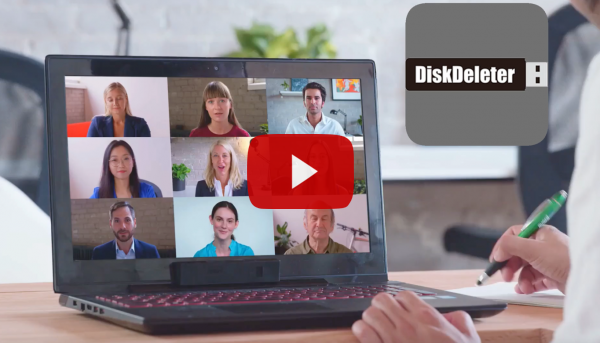
Jun 07, 2021
Vivek Khanna
The global work scenario has drastically changed due to the current turbulent times spawned by the pandemic. Work-from-home (WFH) was the most apparent alternative most global employers chose for continuation of work. Around over 88% organizations worldwide made it mandatory or greatly encouraged their employees to work from home after the World Health Organization (WHO) declared COVID-19 a pandemic.Although over 75% of remote employees say they’re more productive while working from home, over 50% of all IT professionals think that remote workers present a greater security risk. Data security is the highest priority when enterprises are managing their IT assets remotely. This trend may continue for longer period of time as 42% of employees that currently havhttps://youtu.be/RWfKSWUM5dge a remote work option, plan to work remotely more often in the next five years, while majority of companies plan to make working remote, permanent.
Clearly, this is an issue which every organization has to address to provide a proper working environment which is convenient and also secure at same time.
What is security related concerns when workplace is working remotely?
A remote workforce presents a greater security risk for corporate data on company-owned IT assets, especially when employees leave the organization or need replacement equipment. This is because when data assets move outside of enterprise control for repairs, replacement or return, they face the potential for loss, theft, or other forms of data vulnerability.
Data deletion at source prohibits any risk in-transit devices
Data security best practice is to properly sanitize all data-storage assets before they move from a more protected area to a less protected one, and that includes when devices like desktops and laptops are shipped or otherwise transported from an employee’s home to any other location. This ensures that confidential or personal information is completely erased from the device, then verified and certified, protecting that asset against a data breach and reinforcing compliance with data protection regulations. DiskDeleter software also utilizes web browser access logs. When a device accesses the web, browser access logs can provide critical information to identify the system location, on-prem or remote. In such scenarios, browser logs can help to identify the access location and can notify device management team to use proper data sanitization methods.
How DiskDeleter wiping software tackles this issue
With DiskDeleter Drive Eraser, this process allows for complete data security while the company-owned laptop is in transit, whether that asset returns to central IT or heads to the company’s IT asset disposition partner. The DiskDeleter allows for data erasure for the full PCs, laptops or tablets without the need to remove drives before shipping. This solution also provides a feature of sending a tamper-proof certificate of erasure to a central repository. This data erasure function can take place with limited IT interaction and with minimal network connection requirements. The data erasure software can be pre-installed on devices before giving to users. When users are required to ship the assets back to office, they can just click on the shortcut created during software install, which completes the process of data sanitization. This special feature is incorporated in DiskDeleter’s AX product. This product can be used by device management team or system integrators when shipping devices for users working remotely. End users can be provided training regarding how and when to use this feature when asked to sanitize the device before shipping back to head office. For more information on DiskDelter AX product features, check the site at: https://www.diskdeleter.jp/about/ex-feature/
How the Certificate creation feature in disk erasure software helps in ensuring the process of data erasure?
DiskDeleter software provides tamper proof certificate after the data deletion/sanitization is complete. A certificate of media disposition is completed for each piece of electronic media that has been sanitized. A certification of media disposition which appears on the screen can be printed or an electronic record can be saved as a proof of data deletion. For example, most modern hard drives include bar codes on the label for model and serial numbers. The person performing the sanitization might simply enter the details into a tracking application and scan each bar code as the media is sanitized. This helps to validate that entire process is followed properly. Read Blog article for more details: https://diskdeleter.com//blog/disk-sanitization-verification-and-documentation-method//
DiskDeleter can help in providing safe and secure method of transferring IT assets during this challenging time so that your employees are more productive during this new way of working and also make sure that data is not at risk during transition. Please contact for more details at
https://diskdeleter.com//contact-us
© 2024 Jungle KK - Powered By Knowledge Fortune

